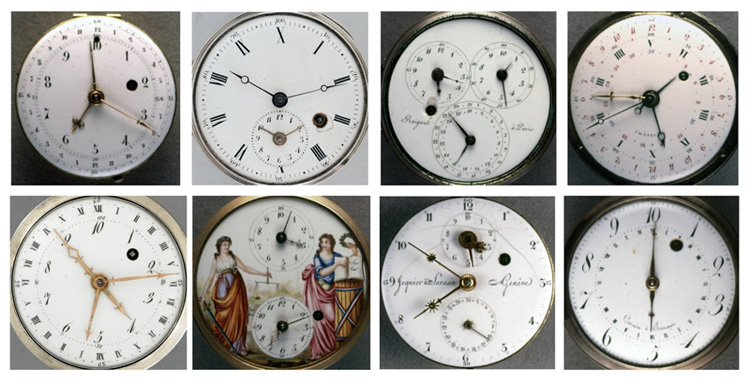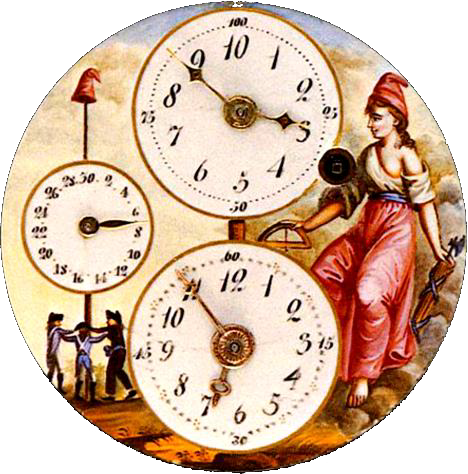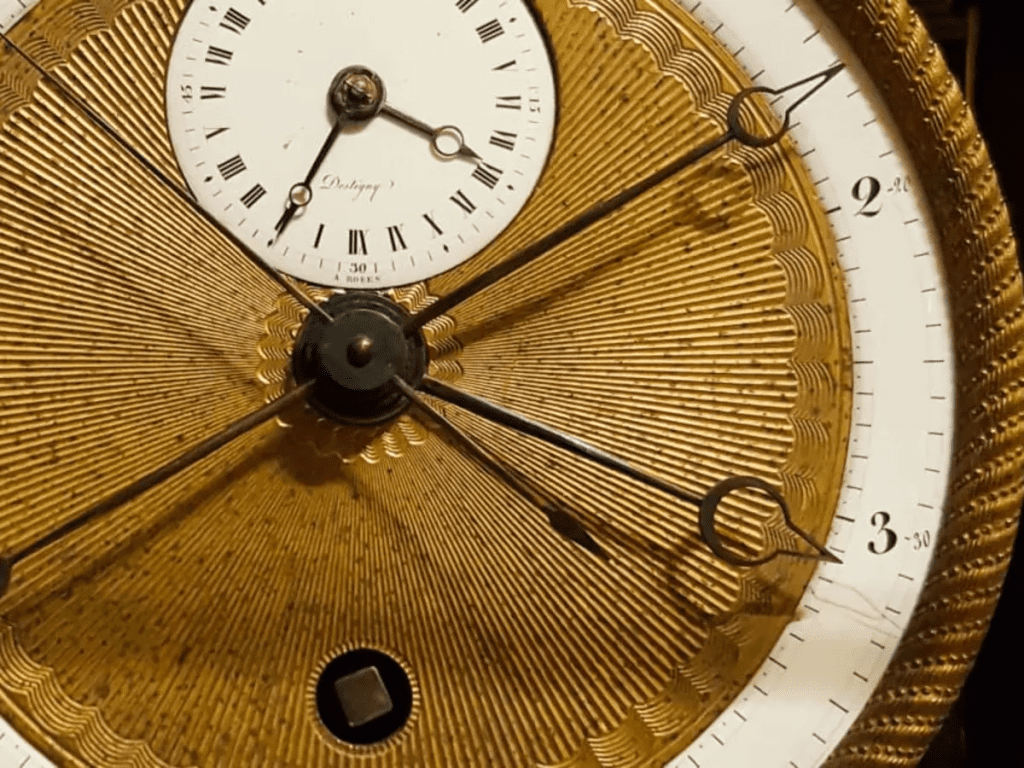The French Revolution wasn’t just a political and social upheaval it was a total reimagining of society. In the spirit of liberty, equality, and rationality, the revolutionaries sought to cleanse France of monarchy, feudalism, and religion. But their ambitions didn’t stop there. In 1793, they even tried to change how people measured time itself.
What emerged was one of the most radical and curious experiments in human history: the French Republican Calendar, complete with decimal time. Instead of 24 hours in a day, the revolutionaries proposed 10-hour days, each hour divided into 100 minutes, and each minute into 100 seconds.
The goal was to replace outdated traditions with logic and reason. But despite the enthusiasm of revolutionary leaders, the new time system confused the public and quickly faded into obscurity.

The Logic Behind Decimal Time
To the minds behind the French Revolution, especially those influenced by Enlightenment ideals, the traditional systems of measurement including time were arbitrary, inefficient, and tied too closely to monarchy and religion.
Inspired by the recent introduction of the metric system, revolutionaries believed that time should also be decimalized for consistency and rationality. Just as meters replaced feet and grams replaced pounds, they argued, time should align with a base-10 system.

Here’s how decimal time worked:
- A day was divided into 10 hours
- Each hour had 100 minutes
- Each minute contained 100 seconds
- One decimal second was slightly shorter than a conventional second
- Noon under the new system occurred at what we consider 5:00 PM
Clocks were even built to reflect this shift, with faces showing ten hours instead of twelve. These new timepieces were placed in public spaces in Paris and a few other cities to encourage citizens to embrace the change.
Video:
A French Revolutionary Watch c. 1794 by Olphan & Montandon – Decimal Time – Unique Object
The French Republican Calendar: A Broader Overhaul
The change to decimal time was part of a much larger transformation known as the French Republican Calendar, which aimed to strip away all remnants of the old world. It replaced the Gregorian calendar with one that had:
- 12 months of 30 days each
- 10-day weeks called décades
- Five or six “complementary days” at the end of the year for festivals
- Months named after seasonal elements (e.g., Vendémiaire for grape harvest)
This restructured calendar sought to distance citizens from Christian holidays and promote a secular, agricultural rhythm to life.

Why Decimal Time Failed
Though revolutionary in concept, decimal time was a practical disaster. Ordinary citizens—especially workers and farmers found it incredibly confusing. It disrupted their sense of routine, as a ten-hour day didn’t align with natural rhythms of sunrise and sunset.
Worse yet, the lack of synchronization with neighboring countries who still used the 24-hour clock made communication and trade more difficult. Even within France, people struggled to convert between old and new time, and clocks were expensive and hard to obtain.
Video:
The Time France Used Metric Time
There was also significant cultural resistance. Timekeeping had long been tied to religious practices, daily labor schedules, and social norms. Changing it meant upending more than just numbers on a dial it disrupted the fabric of everyday life.
By 1795, just two years after decimal time was introduced, it was quietly abandoned for official use. The French Republican Calendar itself lasted until 1806, when Napoleon restored the Gregorian calendar as part of his effort to bring order and tradition back to post-revolutionary France.
A Curious Legacy
Though short-lived, the decimal time experiment is remembered today as one of the most ambitious and bizarre attempts to rationalize society through mathematics. It highlights just how deeply entrenched cultural systems like timekeeping truly are.
Interestingly, while the calendar was discarded, the revolutionaries’ pursuit of standardization left a lasting legacy in other areas. The metric system, introduced at the same time, survived and is now the global standard in science and most nations.

Conclusion: A Bold Idea That Couldn’t Catch On
The attempt to decimalize time was rooted in noble ideas logic, equality, and progress. But it ultimately collided with human behavior, tradition, and the practical realities of daily life. Today, it serves as a fascinating footnote in history, reminding us that even the most well-intentioned reforms need more than mathematics to succeed.
Because when it comes to time, the world doesn’t always tick the way revolutionaries plan.


